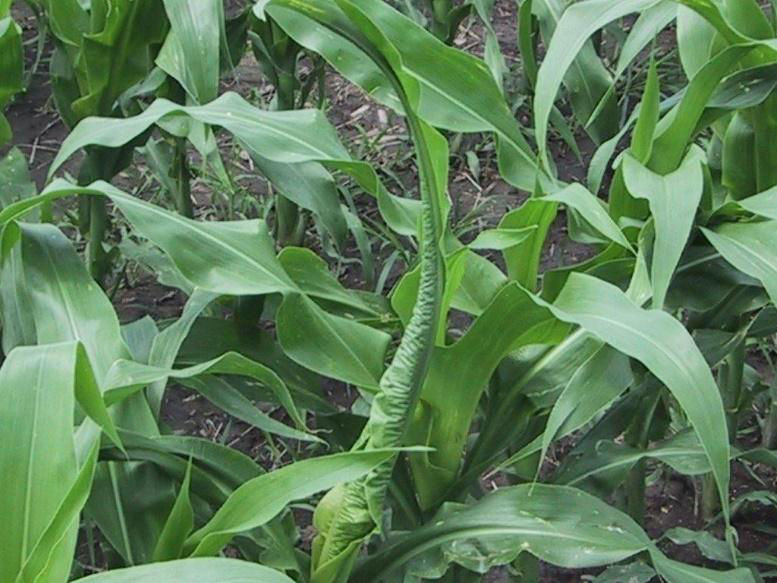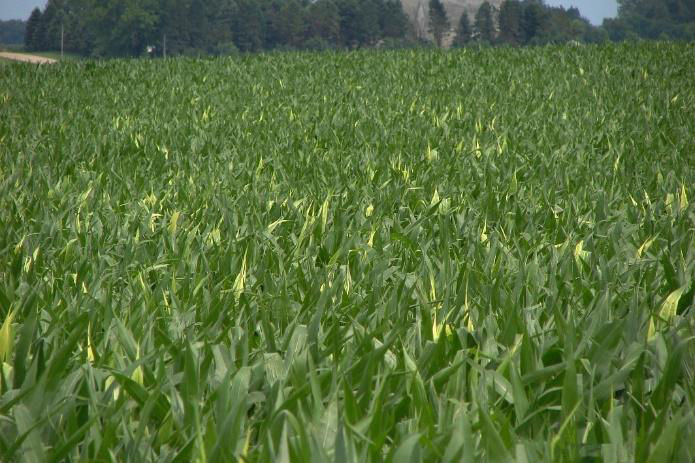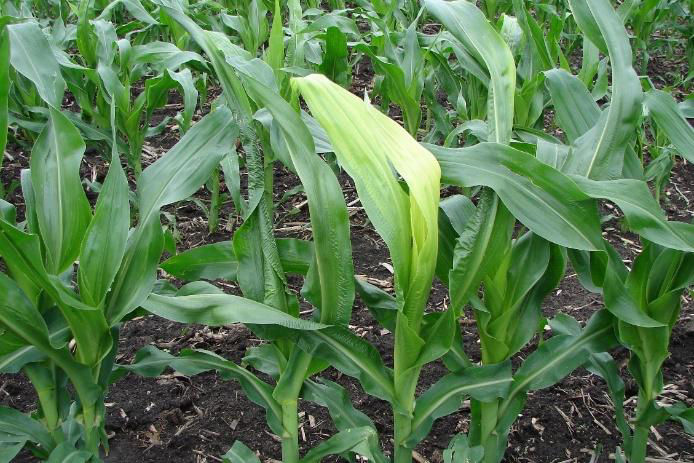3 MIN READ
Environmental Corn Leaf Wrap Cause and Characteristics
May 8, 2022
Environmental leaf wrap (twisted whorls or rapid growth syndrome) of corn is a phenomenon that may occur during vegetative growth stages. The condition can be identified by the appearance of a tightly twisted whorl (Figure 1).
When the twisted whorls unfurl, the leaves are often yellow or white due to lack of exposure to sunlight. The sunlight starved leaves may be noticeable across the field (Figure 2). Upon close inspection, the leaves may have a crinkled or wavy appearance and can be leathery and thickened to the touch (Figure 3). With sun and good growing conditions, the leaves generally turn green and plants develop normally. It is common to see leaf wrap around the V5 to V6 growth stages; however, the phenomenon may occur anytime the plant is growing vegetatively.
The phenomenon may occur when plants grow quickly after rapid temperature swings, especially cool nights followed by warm days with adequate moisture which may cause leaf tissue to become sticky. This makes it difficult for leaves to properly unfurl.
Similar wrapping can be caused by chemical applications, especially growth hormone herbicides. Under favorable growing conditions, treated plants can lean and become twisted. Within a few days, affected plants usually unfurl and return to normal stature. Additionally, strong winds or recovery from hail damage can cause leaves to wrap.
Regardless of the cause, yield impact is usually negligible unless twisted whorls are not unfurled in sufficient time to continue normal development.
Daniel Lundeen
Technical Agronomist
Sources:
Elmore, R. and Robertson, A. 2008. Twisted whorls. Integrated Crop Management. Iowa State University. https://crops.extension.iastate.edu/cropnews/2008/07/twisted-whorls.
Nielsen, R.L. (Bob). 2019. Yellow tops and twisted whorls in corn. Corny News Network. Chat ‘n Chew Café. Purdue University. https://www.agry.purdue.edu/ext/corn/news/timeless/TwistedWhorls.html.
Legal Statements
ALWAYS READ AND FOLLOW PESTICIDE LABEL DIRECTIONS. Performance may vary, from location to location and from year to year, as local growing, soil and weather conditions may vary. Growers should evaluate data from multiple locations and years whenever possible and should consider the impacts of these conditions on the grower’s fields.
Channel® and the Arrow Design® and Seedsmanship At Work® are registered trademarks of Channel Bio, LLC. Bayer and Bayer Cross are registered trademarks of Bayer Group. All other trademarks are the property of their respective owners. ©2022 Bayer Group. All rights reserved.


